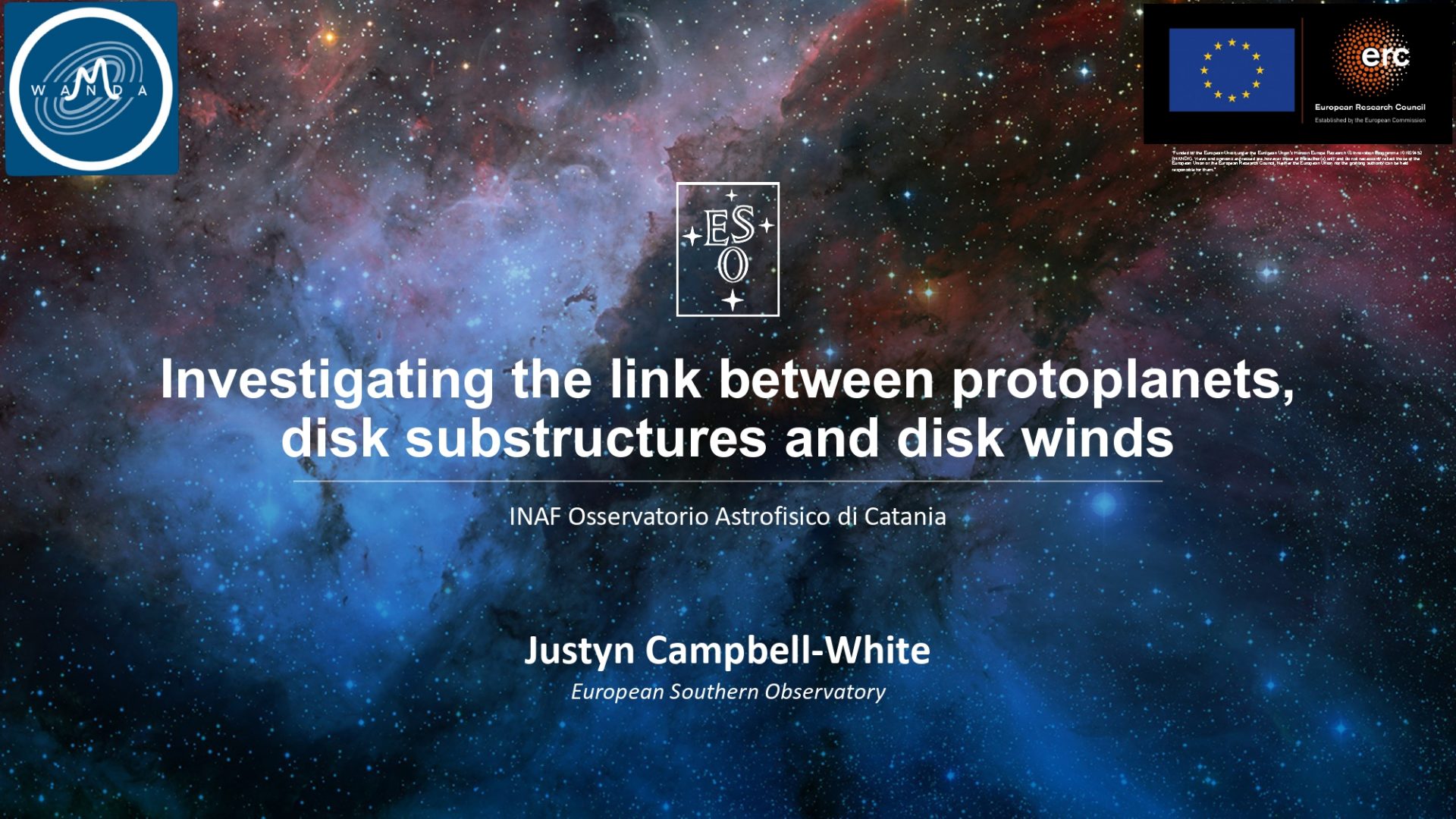Investigating the link between protoplanets, disk substructures and disk winds
Sede A. Riccò Via Santa Sofia 78, CataniaProtoplanetary disks are now routinely observed around young stars but the planets they produce remain elusive to detect. So far, we have only one confirmed direct detection of protoplanets in the disk of PDS 70, with some tentative results (e.g. AB Aur). Yet disk structures are found almost ubiquitously across the sample of resolved disks. We are investigating the potential relationship between inner disk winds and outflows (traced by optical emission lines, such as ), and the presence and type of disk substructures. We aim to determine whether or not the various substructures are the direct results of protoplanet formation.
I will present new results from recent and archival observations of PDS 70. In order to investigate such connections between winds, substructures and planets, we turn to the one system where we have certainly detected the planets. We have carefully applied established techniques to the high-resolution spectra to reveal previously unseen forbidden emission profiles. These results suggest a significant wind originating from the inner disk. We compare these results and measurements of the mass accretion rate and disk properties to those of other weakly accreting young stars and those with transition disks.
We are also carrying out this investigation for the PENELLOPE/ULLYSES sample of ~80 young stars. This complements existing surveys of such winds/outflows, whilst allowing for further exploration of the relation to disk substructures, towards a more complete statistical survey.

